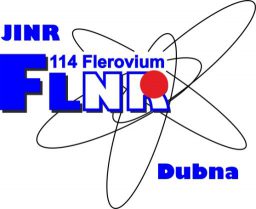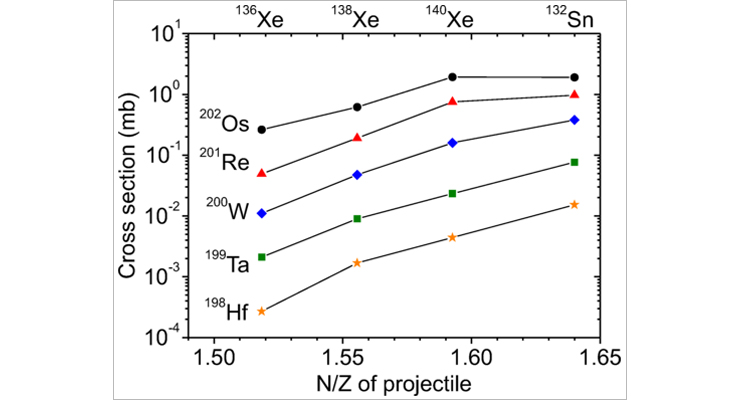Synthesis of neutron-excess isotopes in the vicinity of N=126 magic number in multinucleon transfer reactions with radioactive beams
FLNR Research scientists Alexander Karpov and Viacheslav Saiko studied the processes of synthesis of neutron-excess isotopes in the vicinity of N=126 magic number in multinucleon transfer reactions with radioactive beams. The results of the study were published in Physical Review C journal in June 2024.
Heavy neutron-excess nuclei can be obtained in multi-nucleon transfer (MNT, Multi-Nucleon Transfer) processes in deeply inelastic collisions of low-energy heavy ions. Recent advances in the development of radioactive ion beam facilities widen the possibilities for obtaining nuclei with a large neutron excess.
Crossections of isotope formation from hafnium to osmium (Z = 72 – 76) with the number of neutrons N = 126.
Using multidimensional dynamic model based on Langevin equations [A.V. Karpov and V.V. Saiko, Phys. Rev. C 96, 024618 (2017)] the scientists calculated the cross sections for formation of heavy neutron-excess nuclides obtained in multi-nucleon transfer reactions 132Sn + 198Pt and 136,138,140Xe + 198Pt. This model is able to describe obtained experimental data in details and precisely. The relative rate of production of these nuclei was estimated taking into account the intensity of radioactive beams at existing setups.
FLNR specialists proved that using neutron-excess radioactive projectiles in multi-nucleon transfer reactions with 198Pt makes it possible to increase for an order of magnitude the cross section for formation of neutron-excess nuclides with a magic number N=126. The relative yield of the studied nuclei increases with an increase in the N/Z ratio of the projectile.

